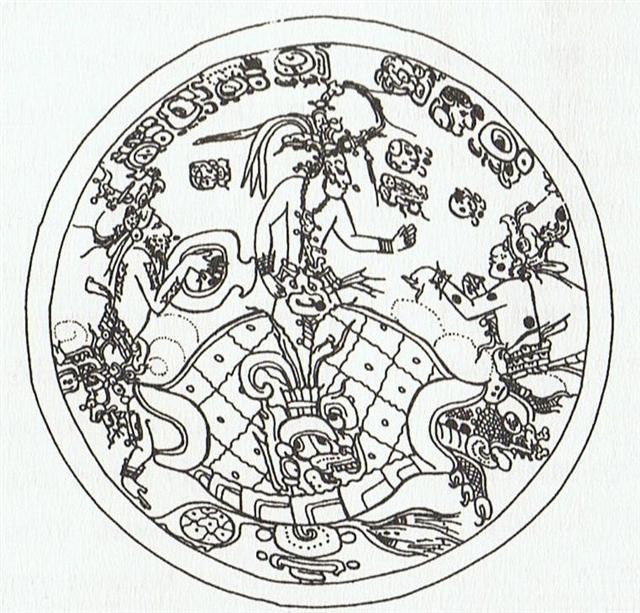|
Already earlier in
this dictionary (at tagata) number 42 has been discussed. 42
is for instance the number of the ancient Egyptian judges of the
dead. They were twice 21 in number. A conjunction between sun and moon necessitates a cycle of 420 nights, a year is too short. Sun must move beyond the border of his natural cycle and go down into the underworld (where there is no light). A gap in time is needed, and it can be illustrated as a gap in the carapace of a turtle:
The '7th flame' of the sun is down in the underworld. From the conjunction of sun with moon a new cycle (tamaiti) will then result. Numerically the new cycle will be 'one more' than what the old cycle covers, i.e. for instance number 43 (or 1 more than 42):
Ha7-10 should therefore not be interpreted as 7 * 10 = 70, because that number is the moon equivalent of the sun double-month ('flame'). 70 is a 'grander week' and 6 such 'weeks' generates 420. Instead, the reasonable interpretation is 'one more' (i.e. 1) to indicate the beginning of a new cycle.
Likewise, the dark mago at Hb9-63 is 'one more' than 1122 + 3 * 58 = 1296 (the total number of glyphs in the calendar cycle):
To the 42 dark nights beyond winter solstice can be added the 58 dark nights beginning with the dark mago, which means that according to H there are 100 dark nights before the moon light (and then the sun light) will return. The 'crack in the carapace' between winter solstice and the reborn light is 100 dark long nights. |
||||||||||||||||||||||||||




